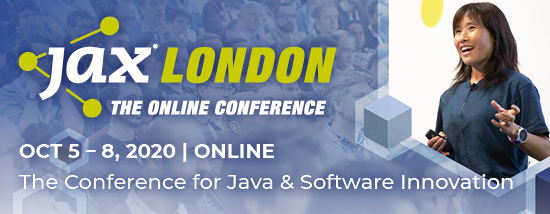The growth of robotic process automation (RPA) over the past few years has been one of technology’s great success stories. A recent Gartner announcement on the state of the market indicates that spending on RPA software is likely to surpass $2.4 billion in 2022. At that pace, 85% of large and very large organizations will have deployed some form of RPA by the end of next year.
On the face of it, RPA’s huge popularity makes perfect sense. Properly executed, RPA is able to automate a wide range of repetitive, rules-based processes, vastly reducing the time spent on routine tasks, as well as the potential for human error which often accompanies such work. More importantly, RPA significantly improves productivity and drives innovation by freeing up employees to bring their creativity and problem-solving abilities to more meaningful work.
SEE ALSO: Things to Watch Out for in Low-Code Process Automation
While there is no denying RPA’s success – Deloitte has predicted automation initiatives will hit almost universal business adoption in the next 2-3 years – many companies complain that it has failed to deliver on its lofty promise. Near constant break-fix cycles leading to automation downtime and the inability of vendors to deliver on the ease of execution have inhibited the ability of many users to effectively scale their RPA initiatives. This, in turn, has impacted anticipated returns in productivity and profitability.
Although the blame for RPA failing to reach its full potential can be traced to numerous causes, a prime culprit may be automating the wrong processes. To be truly effective, RPA relies on automating those processes which showcase its strengths. These typically are processes that rely on clearly identified, predictive business rules, occur frequently, and have structured, readable output (such as an Excel spreadsheet). Processes with little or no exception rates that require rekeying data across multiple systems also represent good candidates for automation.
Bottom line: If companies implementing RPA choose to automate the wrong processes, it simply means they will be making the same mistakes as before, just faster. For that reason alone, it is essential for organizations to capture and analyze their existing processes before jumping into any automation initiative. Only by taking the time to properly capture processes can a business make an informed decision about where RPA can best be deployed. Doing so also makes a data-backed business case for spending on automation.
To that end, many organizations are turning to either task capture or process mining software to help them identify which processes are best to automate. Unfortunately, that raises another question. While these businesses recognize they need help, which software tool is right for them?
Task capture software, as its name suggests, focuses on the numerous actions (“tasks”) performed to execute a specific step in a business process. Originally, this was done by having a business analyst sit with employees to monitor their work tasks, ask questions, and then map the results. While potentially effective, this approach was time intensive and depended in large part on a sound methodology, an analyst with the right skill set to elicit needed information, and employees’ willingness to participate.
Task capture software replaces the human analyst with an automated recorder which captures employee interactions in the different applications they use, taking screenshots and recording data such as keystrokes, clicks, data entry, etc. This is then combined with context recognition to uncover the low-level details of how specific tasks are executed. Ultimately, all of this information is compiled into a package that serves as a guide for RPA developers to automate those tasks and increase operational efficiency, reduce errors, and improve employee engagement.
Beyond fast tracking the automation process, task capture software enables users to build a complete database of task and process documentation that captures even the most complex workflows. That institutional knowledge can then be shared in a way that aligns the work of business analysts with RPA developers, and informs future developments.
Process mining software, on the other hand, targets business processes – any cluster of related, structured work in which a specific sequence of activities produces a product or service for a particular customer. Processing an invoice, for example, is a business process. In traditional business process management, process mining monitors and analyzes existing processes via interviews and workshops, resulting in an idealized picture of a process.
Process mining software automates this procedure, using tools to investigate data stored in the enterprise systems’ event logs – including software logins, interactions in that software, and logoffs – to discover and present end-to-end processes that an organization is performing to complete work. Typically, these digital footprints are combined with powerful analysis techniques to present the process that has been successfully mined along with process variants and suggestions for optimizing and automating.
The benefits of process mining software include its ability to survey and analyze processes across the entire enterprise comprehensively and accurately, target bottlenecks and inefficient processes, and drive compliance and continuous process and efficiency improvements.
Ironically, process mining’s greatest strength – its ability to mine and present a lot of data – is also its apparent weakness. Process mining can produce such an overwhelming amount of data that it may require the support of data scientists to make sense of it all. It also tends to be expensive, particularly when compared to task capture software which is both cost-effective and offers the kind of precise, detailed information businesses can use to drive transformative initiatives.
SEE ALSO: Finding the Recipe for Test Automation Challenges with the Automation Cookbook
Given that, if an organization has the right governance framework and budget in place and its primary goal is to discover end-to-end business processes, then process mining software might be the preferred option.
If a company is trying to uncover the tasks its employees perform to improve workforce efficiency, identify additional automation opportunities, and get a better grasp of current processes, however, task capture software probably makes more sense. Because many of the automation opportunities identified by task capture are less complex than those captured through process mining, they represent good candidates for citizen designers and as such, are ideal for organizations which are also concerned about a more cost-effective, user-friendly approach.
The post Automating the Right Processes: Task Capture vs. Process Mining? appeared first on JAXenter.
Source : JAXenter




















